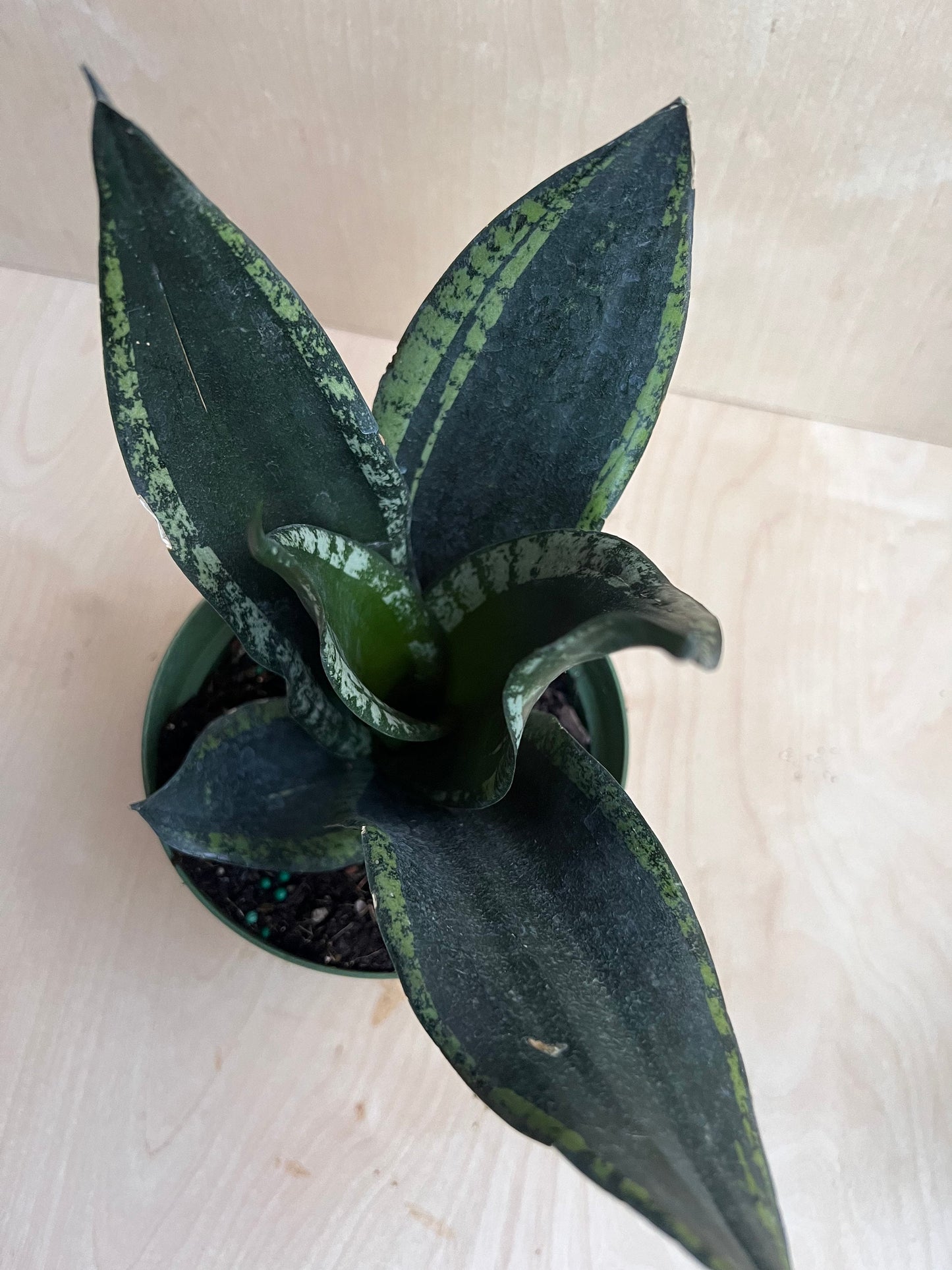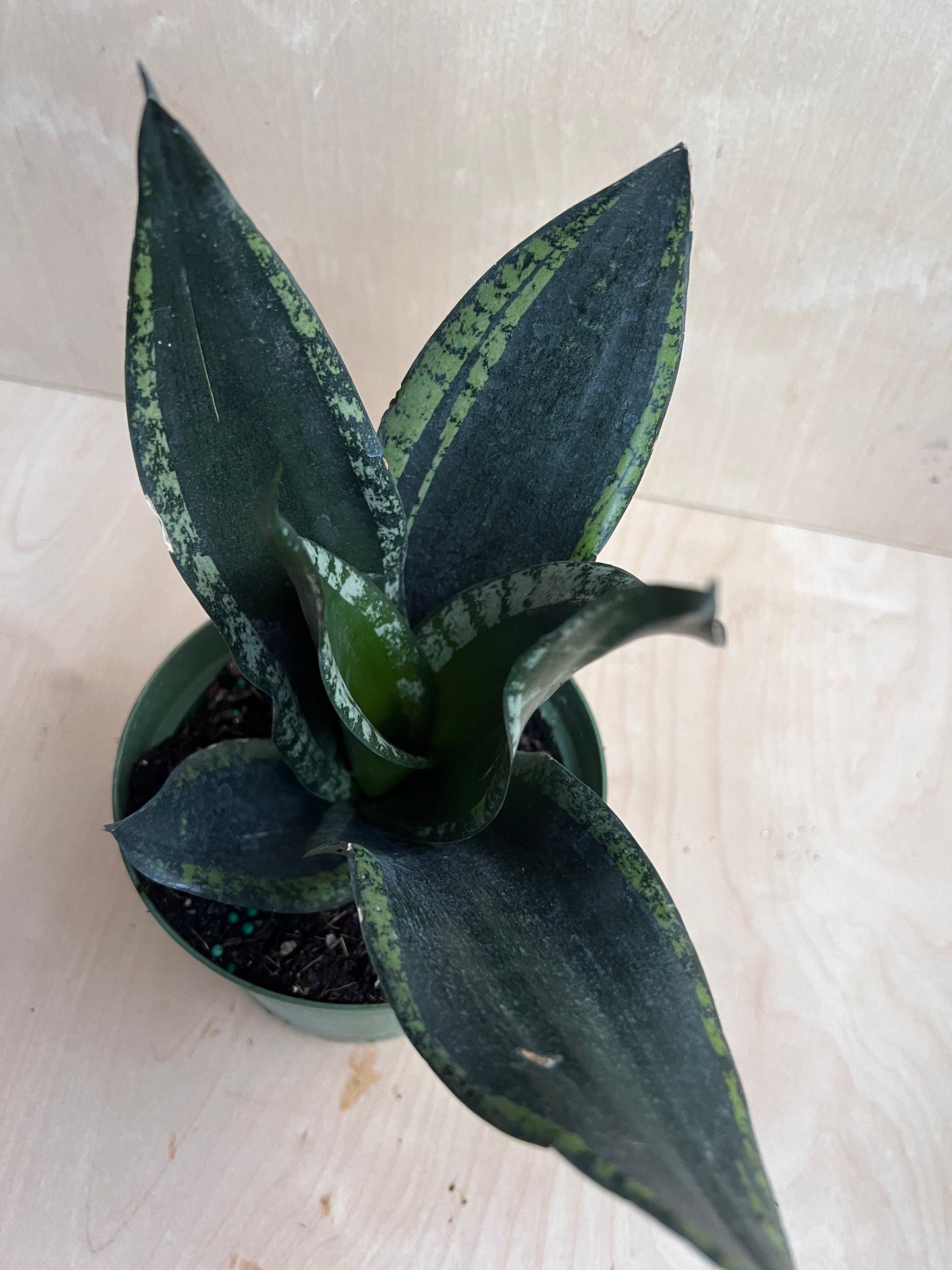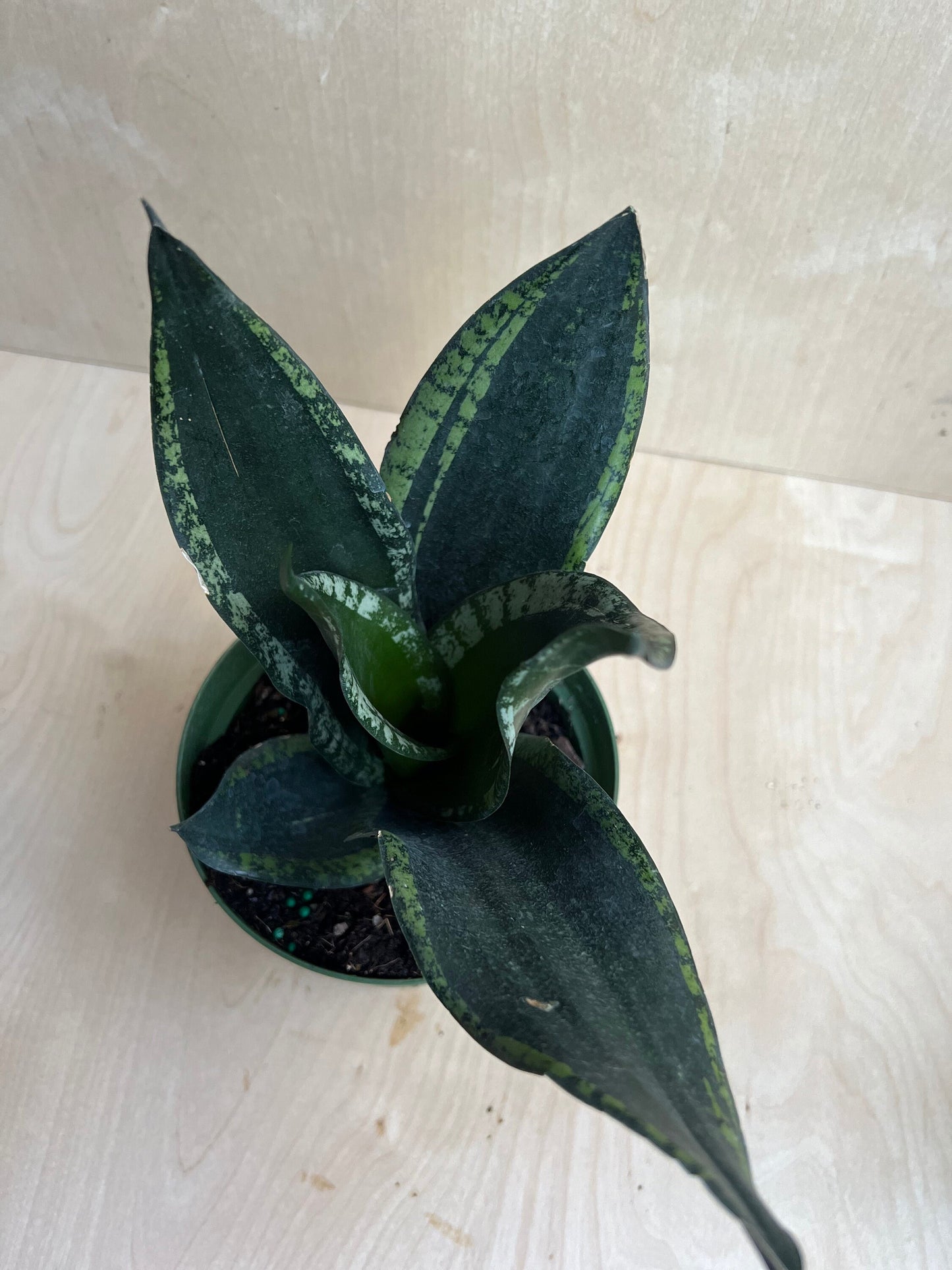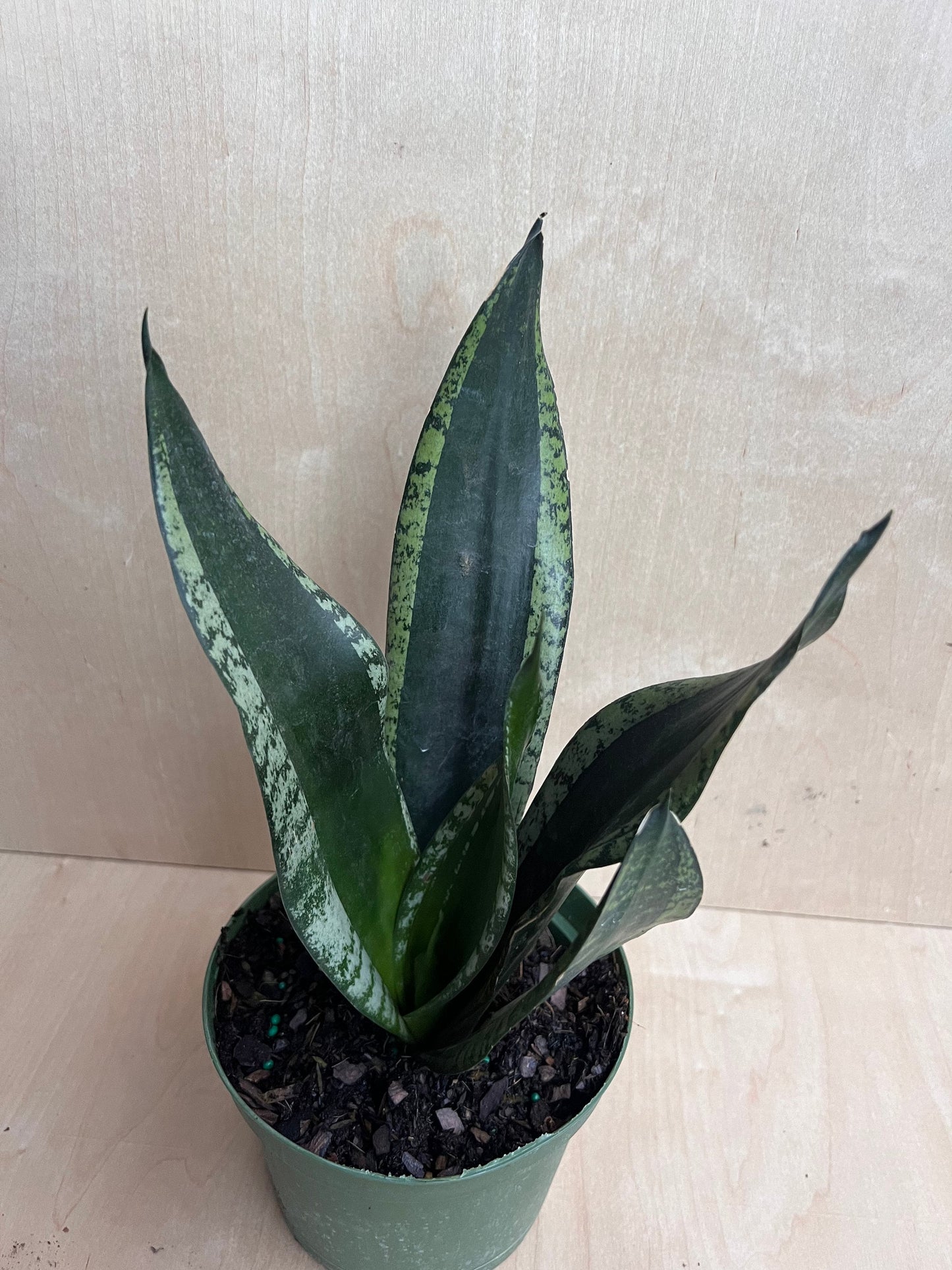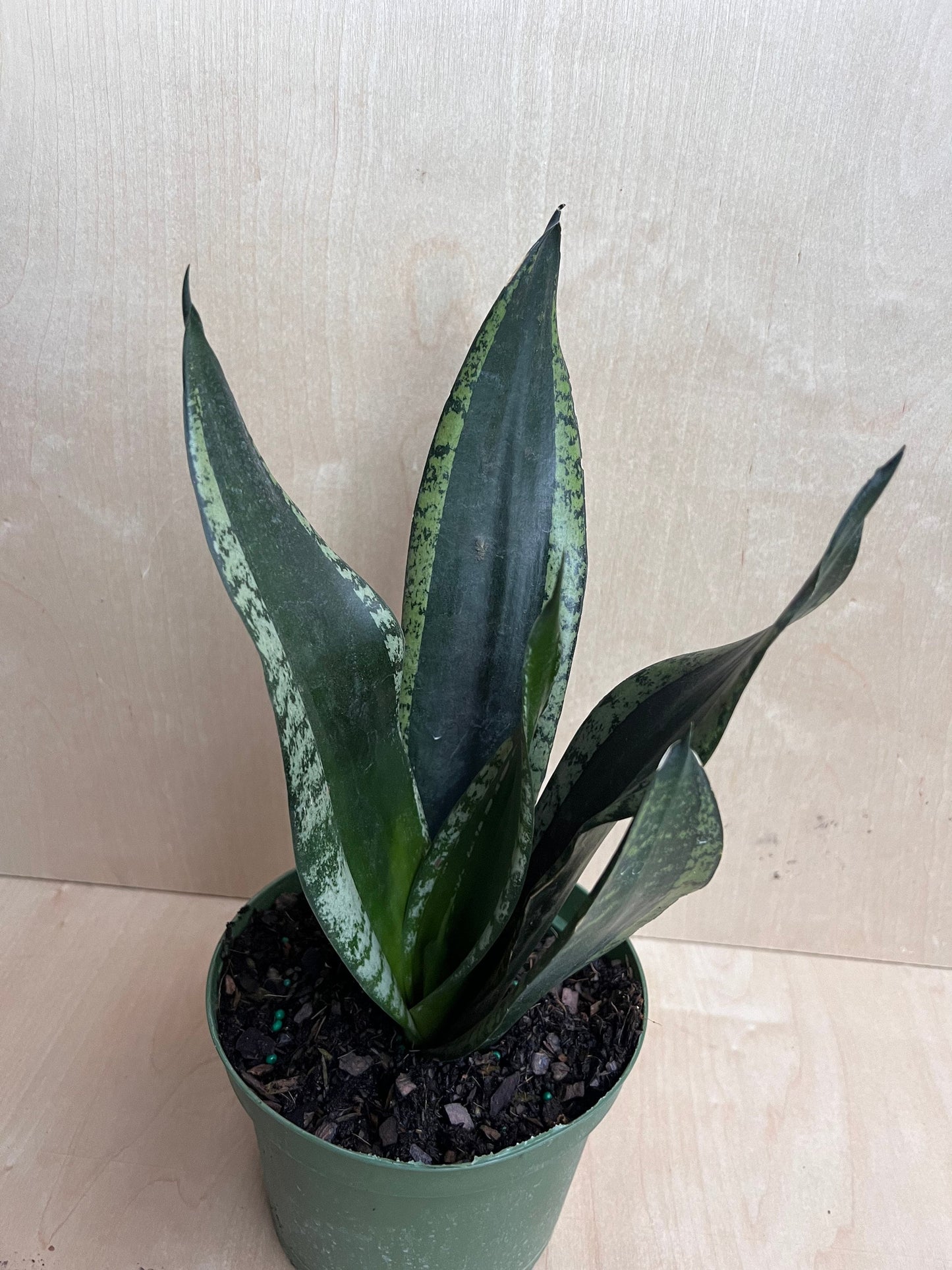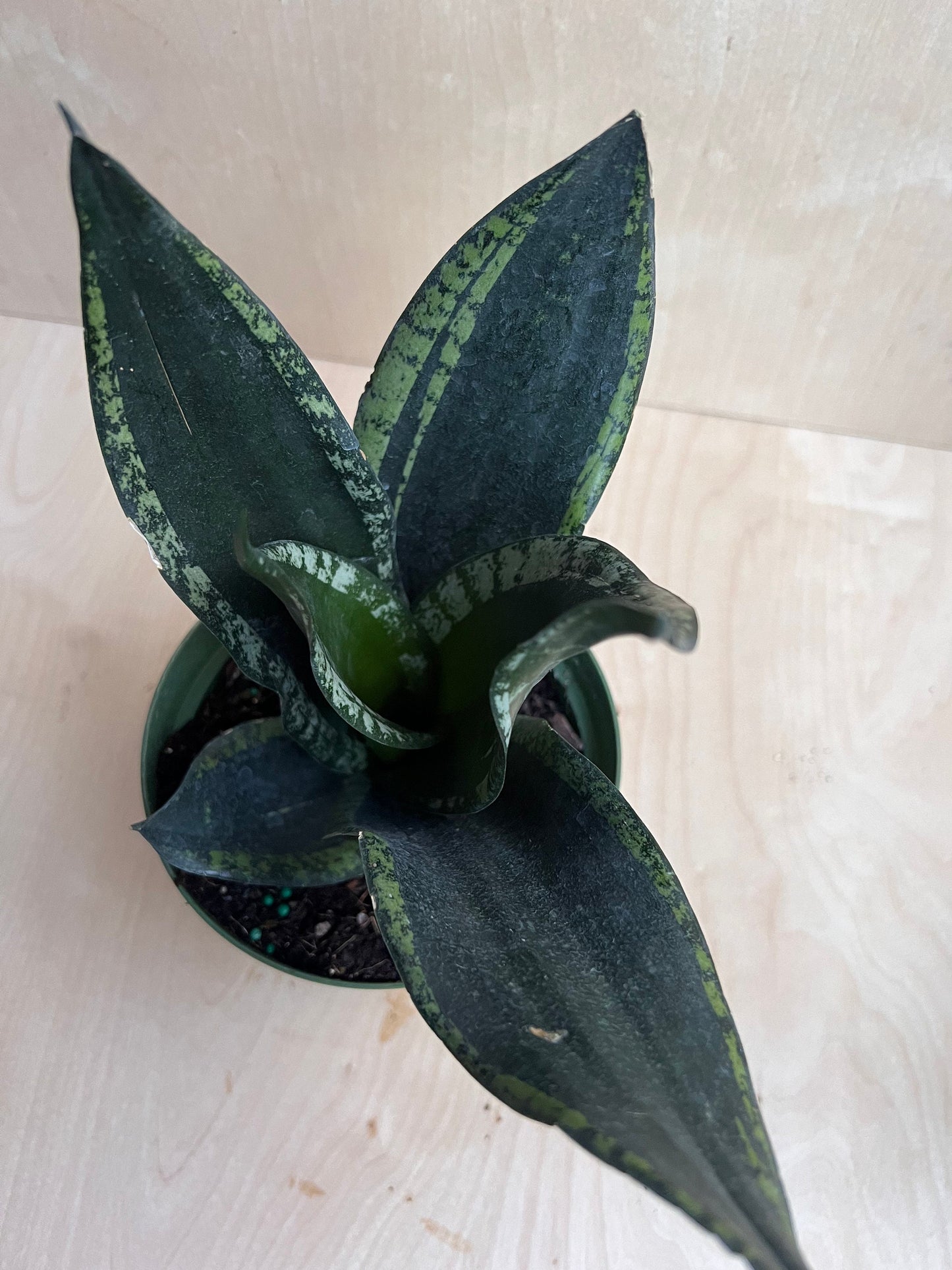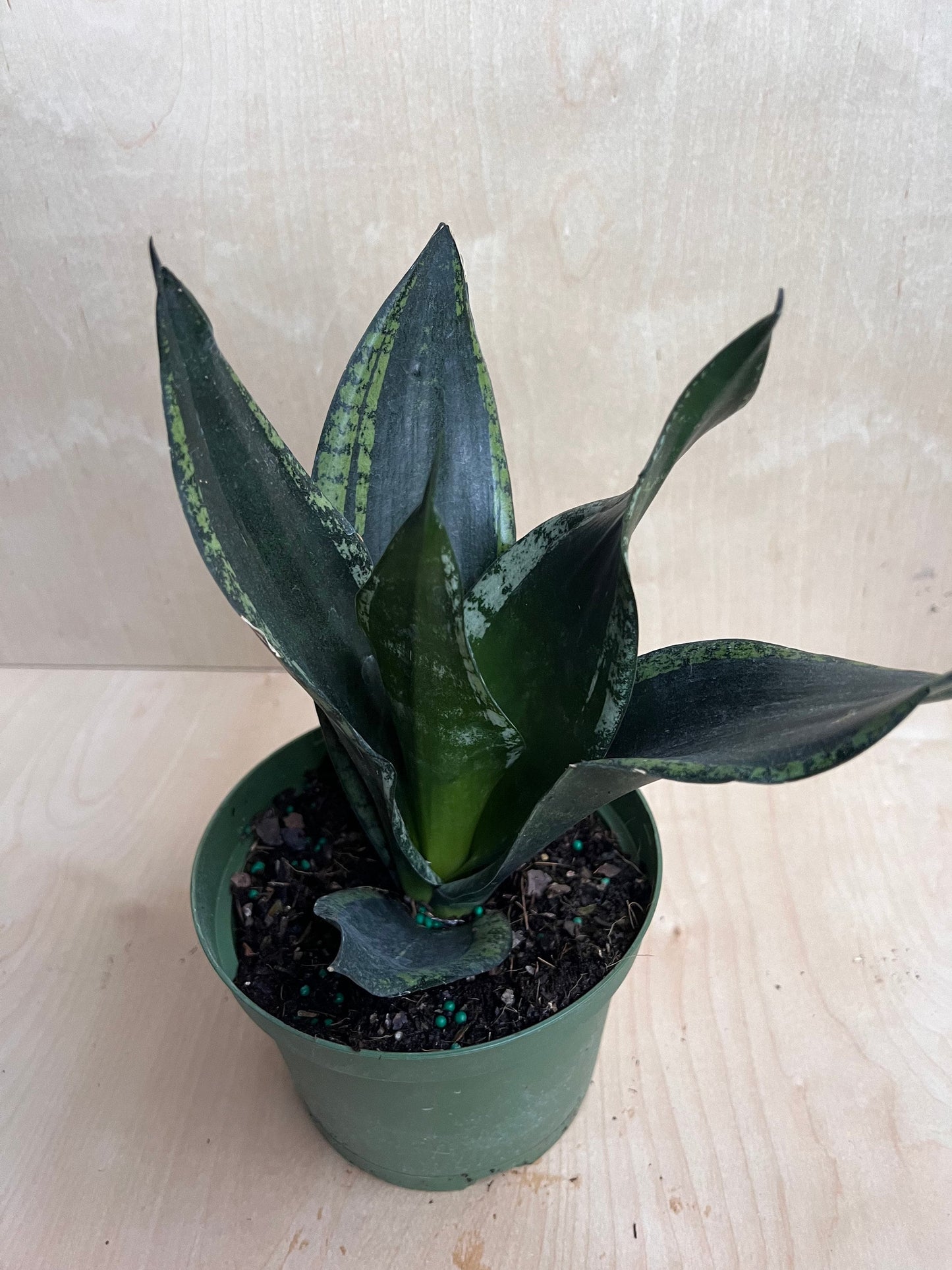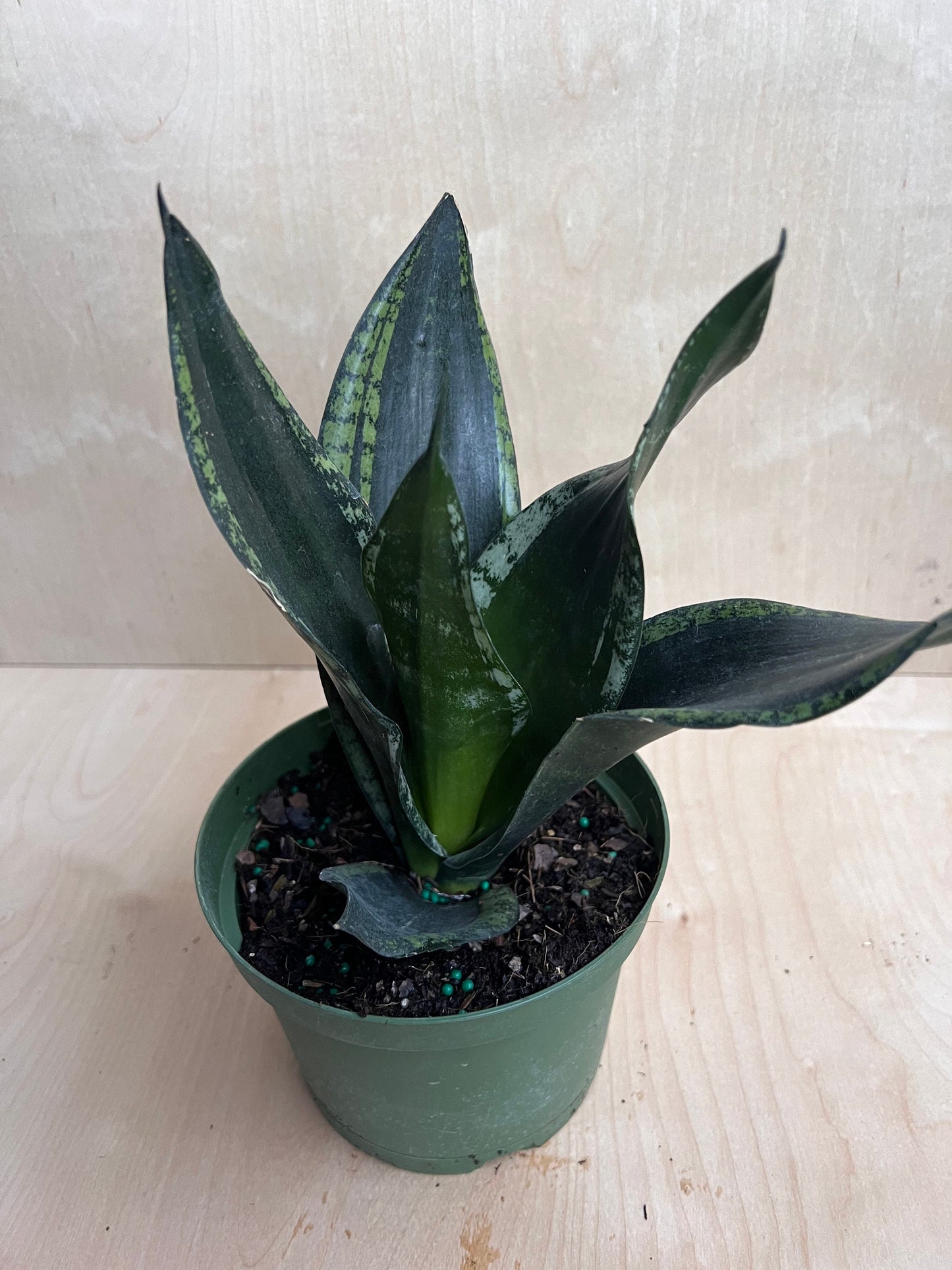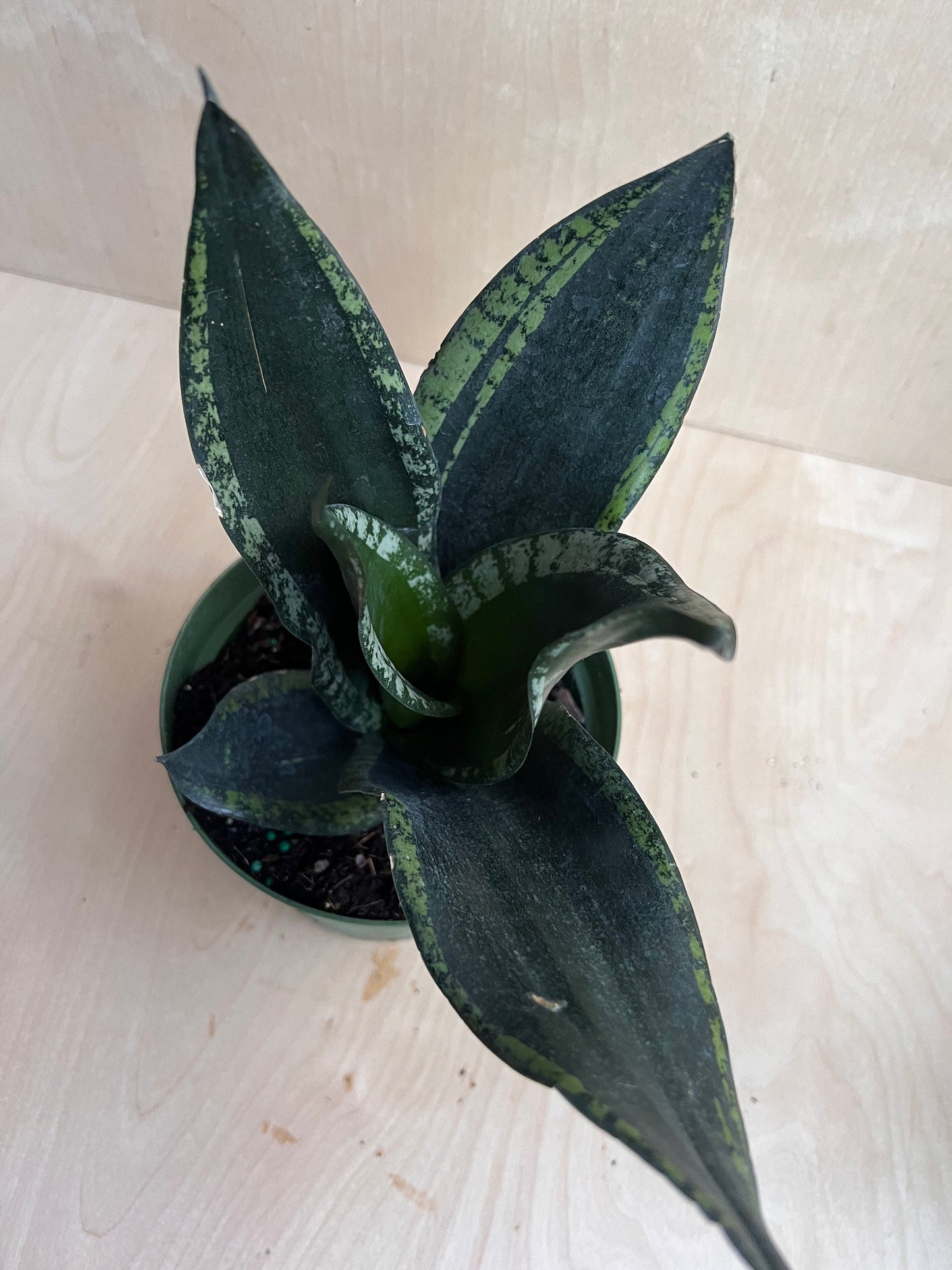Sansevieria Whitney, Sansevieria Silver Flame, in 6" Inches pot, Mother in law
Sansevieria Whitney, Sansevieria Silver Flame, in 6" Inches pot, Mother in law
Couldn't load pickup availability
Note: You will receive one large Sansevieria Whitney aka Silver Falme in 6" inches pot Similar to the pictures
Sansevieria 'Whitney' is a striking cultivar of Sansevieria, known for its upright, sword-shaped leaves featuring dark green with lighter green, almost silver-like streaks. The leaves grow in a rosette arrangement, creating an architectural and graceful appearance. Typically growing to 12-18 inches tall, Sansevieria 'Whitney' is more compact than other varieties, making it an excellent choice for smaller spaces, such as desks or shelves. Like other Sansevieria species, it is easy to care for, adaptable to a range of light conditions, and requires minimal watering. Its air-purifying qualities and low-maintenance nature make it ideal for home and office environments.
Care Guide for Sansevieria 'Whitney'
-
Light Requirements
- Bright, Indirect Light: Sansevieria 'Whitney' thrives in bright, indirect light, which helps maintain its vibrant color and healthy growth. It can tolerate low light, though growth slows and variegation may diminish. Avoid direct sunlight, as it can scorch the leaves.
-
Watering
- Infrequent Watering: Like all Sansevieria, 'Whitney' is drought-tolerant and prefers to dry out completely between waterings. Water every 2-3 weeks, or when the soil feels dry. In fall and winter, reduce watering as the plant’s growth slows. Overwatering is a common issue, so ensure the pot has proper drainage to avoid root rot.
- Watering Tips: Water thoroughly, ensuring excess water drains out. Never let the plant sit in water.
-
Soil Requirements
- Well-Draining Soil: Sansevieria 'Whitney' prefers well-draining soil, such as cactus or succulent mix. If using regular potting soil, mix it with sand or perlite to improve drainage. Well-draining soil is essential to prevent root rot.
-
Temperature
- Warm Temperatures: Sansevieria 'Whitney' thrives in temperatures between 60°F and 85°F (16°C to 29°C). Avoid temperatures below 50°F (10°C), as it is sensitive to frost. Ideal indoor temperatures suit this plant well.
-
Humidity
- Average Humidity: This plant does well in typical indoor humidity levels. It tolerates dry air, making it ideal for homes or offices with air conditioning or heating. Special humidity conditions are not required.
-
Fertilizing
- Feed Sparingly: During the growing season (spring and summer), fertilize Sansevieria 'Whitney' once a month with diluted, balanced liquid fertilizer. Avoid fertilizing in fall and winter when growth slows. Over-fertilizing can cause nutrient imbalances or harm the plant.
- Organic Options: You can use compost tea or mild organic fertilizer during the growing season if preferred.
-
Pruning and Maintenance
- Minimal Pruning: Sansevieria 'Whitney' requires little pruning. Remove any dead or damaged leaves as needed to maintain appearance. The plant naturally keeps a tidy form.
- Cleaning the Leaves: Wipe the leaves with a damp cloth to remove dust, helping the plant absorb more light and maintain its glossy appearance.
-
Repotting
- Repot Every 2-3 Years: Sansevieria 'Whitney' has a slow growth rate and doesn't need frequent repotting. Repot every 2-3 years or when the plant becomes root-bound. Choose a pot that is 1-2 inches larger than the current one and ensure it has drainage holes.
- Propagation by Division: During repotting, you can propagate by dividing the plant’s rhizomes into smaller sections, ensuring each section has roots and leaves.
-
Pests and Diseases
- Pest-Resistant: Sansevieria 'Whitney' is generally pest-resistant but can occasionally attract mealybugs, spider mites, or scale. Check regularly for pests, especially at the base or undersides of the leaves. If pests appear, treat with insecticidal soap or rubbing alcohol.
- Root Rot: The biggest issue with Sansevieria is root rot caused by overwatering or poor drainage. Be mindful of watering habits and ensure the soil drains properly.
-
Propagation
- Propagation by Division or Leaf Cuttings: Propagate Sansevieria 'Whitney' by dividing the rhizomes during repotting. Each division should have roots and leaves. Alternatively, leaf cuttings can be taken, allowed to callous, and planted in well-draining soil. Rooting can take weeks to months.
Summary of Care Tips:
- Light: Bright, indirect light; tolerates low light but grows slower.
- Watering: Water infrequently; let soil dry out completely between waterings.
- Soil: Well-draining soil, such as cactus or succulent mix.
- Temperature: Prefers temperatures between 60°F and 85°F (16°C to 29°C); avoid cold drafts.
- Humidity: Tolerates average humidity; no special humidity needs.
- Fertilizer: Fertilize sparingly during the growing season with diluted balanced fertilizer.
- Repotting: Repot every 2-3 years or when the plant becomes root-bound.
Share
